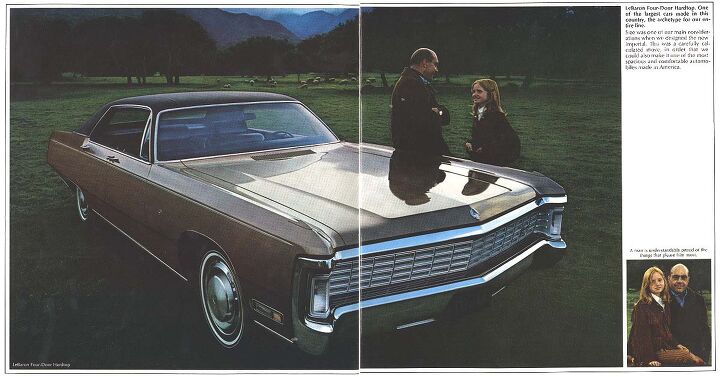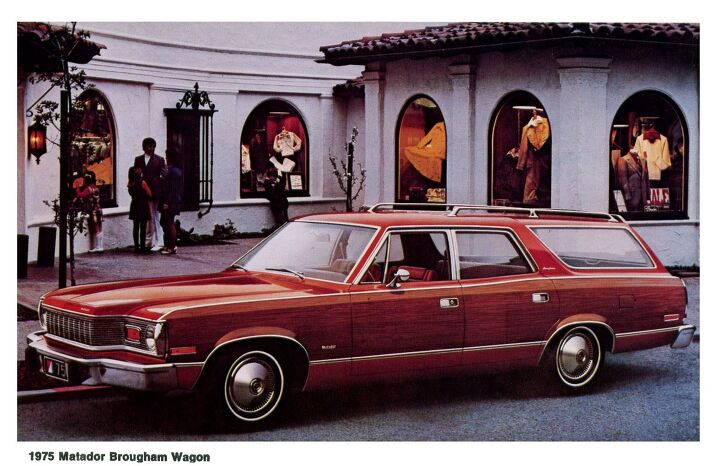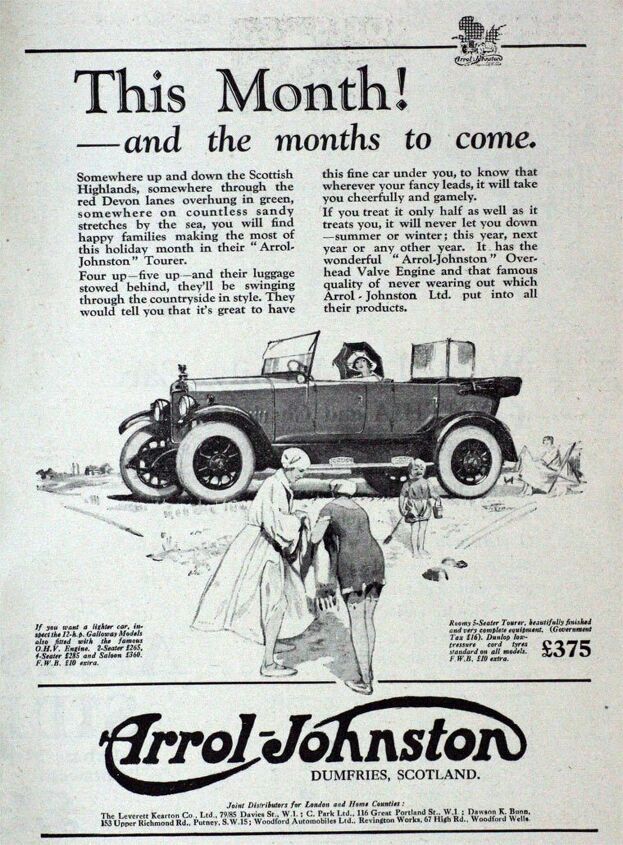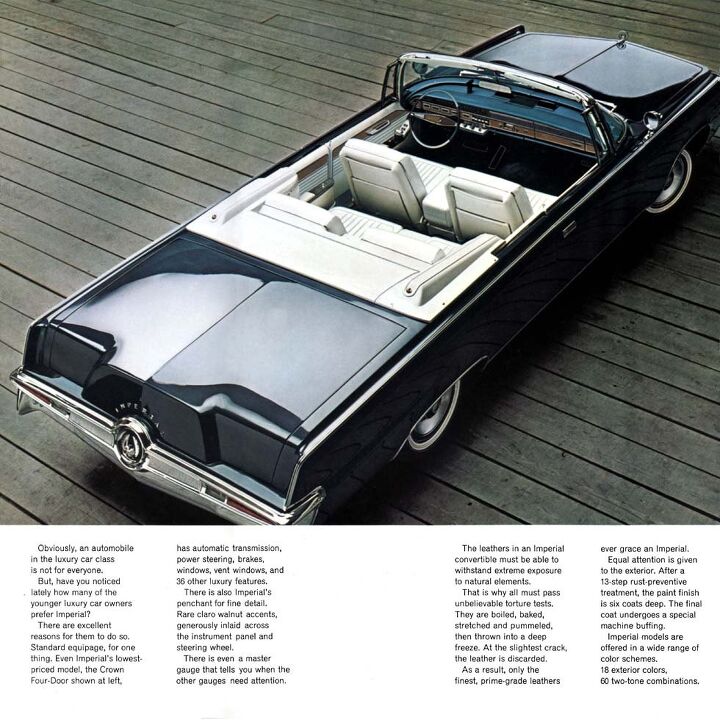#RareRides
Rare Rides Icons: The History of Imperial, More Than Just a Car (Part XIII)
We entered the Fuselage Look era of the Imperial in our last installment, as Chrysler shook off the conservative and upright styling its flagship brand wore prior to 1969. Prices were notably slashed and quality suffered as Imperial shared body panels with its Chrysler siblings, incidents that in previous decades would’ve been out of the question. We pick up in 1970, for the second year of the C-body Fuselage Imperials.
Rare Rides Icons: The AMC Matador, Medium, Large, and Personal (Part III)
We left off in Part II of our AMC Matador coverage during the model lineup’s second year on the market. The Matador was working overtime by 1975, as AMC marketed their largest car to the intermediate and large car buyers. Unfortunately, things only went downhill from there.
Rare Rides Icons: The History of Imperial, More Than Just a Car (Part XII)
As we make our way into the 12th installment of Rare Rides Icon’s Imperial coverage, the third generation 1967 Imperial became the shortest-lived in the nameplate’s history. After the decade-long reign of the D-body, Imperial switched to the unibody C platform to cut costs, and move on from dated body-on-frame underpinnings. But it was an odd time to introduce a new car, as the C-body was no spring chicken when the Imperial debuted. More importantly, Chrysler was on the cusp of an entirely new styling direction: The Fuselage Look.
Rare Rides Icons: The AMC Matador, Medium, Large, and Personal (Part II)
AMC introduced its new Matador lineup into the very competitive intermediate (midsize) car market in 1971. It was a time when the company was making advances in build quality, streamlining, and an industry-leading all-encompassing warranty. And though the Rebel by any other name was selling decently, it wasn’t grabbing market share as AMC expected. Especially lackluster were sales of the Matador Coupe, a body style that was the top seller amongst its domestic competitors. As 1974 approached, AMC prepared to make some big changes to Matador, and introduce an all-new two-door.
Rare Rides Icons: Arrol-Johnston, First Four-wheel Brakes and Inventor of Off-road Vehicles (Part II)
In our introductory article on historical Scottish car maker Arrol-Johnston, we covered the company’s 1895 inception, its invention of four-wheel automotive brakes, and the financial difficulties that led it to become a subsidiary company under steel magnate William Beardmore. Today we finish with the brand’s rise to luxury and rather rapid demise.
Rare Rides Icons: The History of Imperial, More Than Just a Car (Part XI)
We return once more to Imperial today and find ourselves in 1967. The earlier portion of the Sixties was a turbulent time for Imperial, as the D-body soldiered on from 1957 through 1966 model years as the Imperial marque’s second-generation car. In 1967, Imperial’s lead designer Elwood Engel managed Imperial’s transition to a new shared platform. Say hello to C.
Rare Rides Icons: The AMC Matador, Medium, Large, and Personal (Part I)
The American Motors Matador line was many things to many people during its run from 1971 to 1978. Built domestically and abroad, Matadors occupied more than one size class, a broad range of price points, and were even dressed in fashionable luxury garb for a while. Come along as we explore the world of Matador.
Rare Rides Icons: Arrol-Johnston, First Four-wheel Brakes and Inventor of Off-road Vehicles (Part I)
We discussed Arrol-Johnston briefly in our Rare Rides Icons coverage of Isotta Fraschini a few days ago. Though the brand didn’t even make it to see World War II, the company’s contributions to the advancement of passenger vehicles make it an important one. Onward, to Scotland!
Rare Rides Icons: The History of Imperial, More Than Just a Car (Part X)
This 10th installment of our Imperial coverage finds us at a turning point in its styling. Virgil Exner had been fired but was allowed to stay on as a design consultant at Chrysler. Exner’s immediate replacement was Elwood Engel, who’d designed the 1961 Lincoln Continental and then jumped ship when he was not promoted at Ford. Chrysler execs wanted out of Exner’s winged, googly-eyed stylistic cave, and Engel took the aged D-body in a very different direction for 1964.
Rare Rides: Vanderhall Motor Works and The Venice, Three Wheels Only
Today’s Rare Ride is presented to you because I saw one in traffic on Wednesday. Unsure what the three-wheeled thing I saw was, I gave a vague description to Twitter and was informed almost immediately that what I’d seen was a Vanderhall Venice. Let’s learn some three-wheel car-bike things.
Rare Rides Icons: The V20 Toyota Camry
The Toyota Camry made leaps and bounds after the model debuted as a sedan sub-variant of the Celica in 1980. The first Camry to stand on its own was the V10, a very boxy four-door on sale for just four years, from 1983 to 1986. In the North American market, the front-drive V10 Camry replaced the rear-drive Corona as Toyota’s compact offering. And though the V10 was designed in part with export markets like North America in mind, its successor the V20 used the North American customer as its starting place.
Rare Rides Icons: The History of Imperial, More Than Just a Car (Part IX)
Today marks the ninth installment in our history of Imperial, as the calendar flips over to 1961. The second generation Imperial is not quite to the middle of its tenure on its own platform, the D-body. Virgil Exner imposed a wild new styling direction on Imperial for 1960 that was both outlandish visually, and heavy-handed in its execution. “More of that,” said Exner for ’61.
Rare Rides Icons: The History of Imperial, More Than Just a Car (Part VIII)
We continue our Rare Rides Icons series on Imperial today. Starting in 1957, Chrysler’s then-separate luxury arm spent more and more time on bold styling, and less on the hand-built quality for which the company’s first cars in 1955 and 1956 were known.
Rare Rides: The 1980 Toyota Corona, a Camry Predecessor
Today’s Corona is the third to appear in the Rare Rides series. We started in early 2020 with a 1968 Corona Coupe and followed up that October with a Mark II wagon. Today’s entrant is from the last time North Americans could buy one.
Rare Rides Icons: The Abandoned Bugatti EB 112, a Super Sedan
Power, luxury, exclusivity, and grand touring driving enjoyment. The Bugatti EB112 promised all those adjectives in spades were it ever actually produced. But it was born at a very difficult time in the company’s history, and the super sedan never made it beyond the concept stage.
However, due to some interesting timing at the company level, the EB112 was not just a one-off concept. In fact, there are three in existence.






























Recent Comments